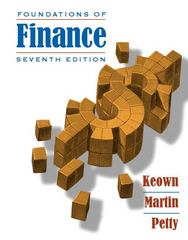Question
Problem: Assume that Investor A buys some open-end shares at 109% of asset value, and Investor B buys closed-end shares at 85% thereof, plus 1%
Problem: Assume that Investor A buys some open-end shares at 109% of asset value, and Investor B buys closed-end shares at 85% thereof, plus 1% commission. Both sets of shares earn and pay 30% of this asset value in, say, four years, and end up with the same value as at the beginning. Investor A redeems his shares at 100% of value, losing the 9% premium he paid. His overall return for the period is 30% less 9%, or 21% on asset value. This, in turn, is 19% on his investment. How much must Investor B realize on his closed-end shares to obtain the same return on his investment as Investor A? The answer is 73%, or a discount of 27% from asset value. In other words, the closed-end man could suffer a widening of 12 points in the market discount (about double) before his return would get down to that of the open-end investor.
Question: Why did investor B arrive at 73%
Step by Step Solution
There are 3 Steps involved in it
Step: 1

Get Instant Access to Expert-Tailored Solutions
See step-by-step solutions with expert insights and AI powered tools for academic success
Step: 2

Step: 3

Ace Your Homework with AI
Get the answers you need in no time with our AI-driven, step-by-step assistance
Get Started


